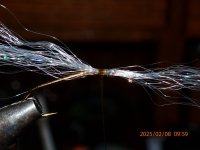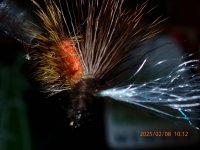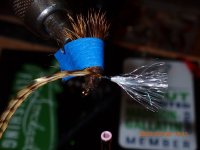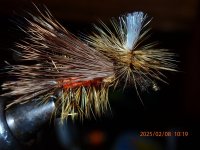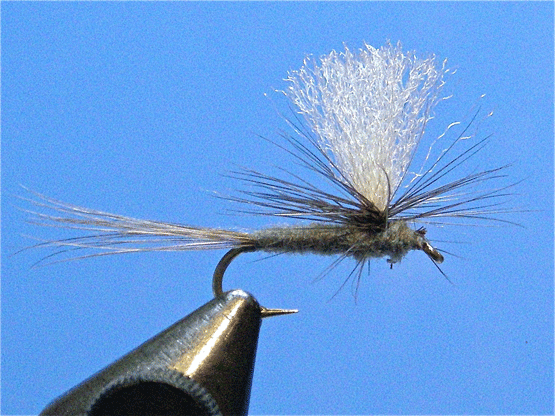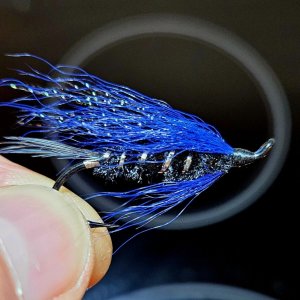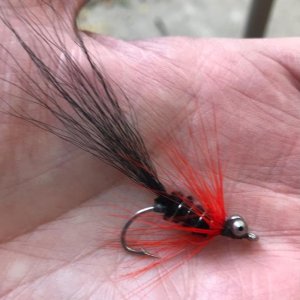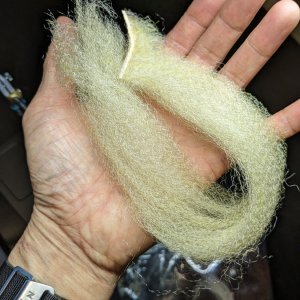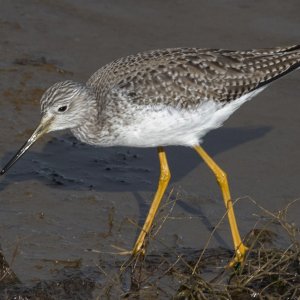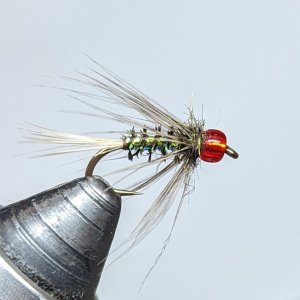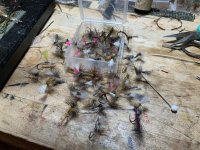
Despite having tied flies for decades, my skills at tying parachutes was marginal at best. No matter how hard I tried, wobbly posts, messy profiles and captured hackle fibers resulted in overall sloppy flies. As the winter of 2022/23 set in here in Montana, I resolved to improve my parachute tying skills so I could produce some decent parachute style flies. Parachutes are used for everything from hoppers down to tiny midges. The Parachute Adams, Purple Haze and Klinkhammer emergers are staple and effective parachute patterns that I just had to get right.
After watching hours and hours of videos on the parachute tying technique as well as reviewing all the literature I could find, I came to a three part, alternative tying solution that helps me tie some respectable parachute style flies. The technique works best with fine 10/0 to 16/0 threads and a rotary vice. So far I’ve made this work down to #22 midges.
Part 1. Tying the post. I always found it extremely tedious trying to wrap thread around a wobbly clump of parapost or other material to create a stable, firm post. Rarely was I able to create a post stiff enough to handle winding hackle without serious flaws or missteps. The solution adopted actually is rather simple. Using any pliable, translucent fiber—I prefer Frizz Fiber, but EP fibers, SF Blend, parapost, Zelon or similar will work—I take a small 2-2.5 inch clump of fibers and secure to the hook shank with 3-5 tight thread a wraps at the middle of the clump. Both ends of the clump are then twisted as tight as possible to create a thin post. While holding the twisted fibers apply a sparingly amount of UV resin to the first 1/8” - 5/16” of the post and cure. This creates a solid post, secure to the hook shank.
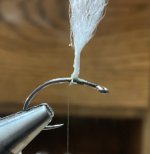
Part 2. Tying the body. Another problem I had with more traditional parachute techniques was finishing the front part of the thorax and then continuing thread use back to the post to tie in the hackle. To solve that, depending on pattern, I tie in a tail, trailing shuck, body and thorax using appropriate materials to create the desired profile. Build the profile all the way to the hook eye and secure with half hitches or whip finish just like a normal fly and detach the thread.
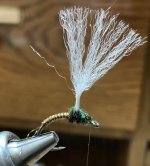
Part 3. Tying the Parachute. Traditional parachute tying secures a hackle upwards along the post with thread wraps and winds the hackle down the post. In my experience, wobbly posts and twisted hackle usually resulted in sloppy hackle. Finishing the fly was also an issue as trying to secure the hackle tip at the bottom of the post usually resulted in trapped fibers below the body and thorax. To solve this, I take advantage of my rotary vice. Rotate the vice jaws 90 degrees to the right and the entire vice 90 degrees to the right so the post is now horizontal and parallel to the tying bench. Start a thread wrap on the post just like you’d start a thread wrap on a hook shank. Cover the entire post with thread wraps leaving the thread at the base of the post. Tie in your hackle shinny side up with the feather facing down instead of up. Leave your thread at the base of the post. Apply a moderate amount of head cement to the thread wraps making sure there is cement at the base of the post. Wind the hackle once or twice to the left side of the thread. Then wind the hackle to the right of the thread along the post 2 or 3 turns then back to the base of the post. Make two wraps to the left of the thread and secure the hackle tip with two thread wraps taking care not to capture any fibers below the body. Trim the hackle tip. Finish the fly by making a double half hitch around the base of the post. The half hitch loop should be taken to the bottom of the fly and pulled tight. The head cement applied to the post will secure this double half hitch. This generally avoids any capture of hackle fibers below the body and thorax. Trim the post to the desired length.
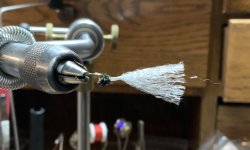
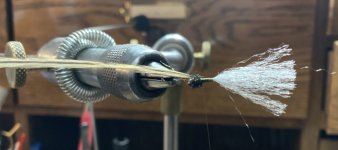
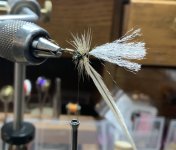
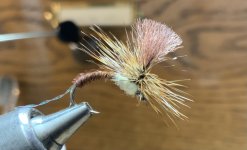
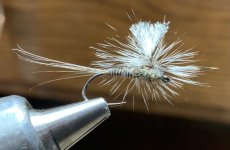
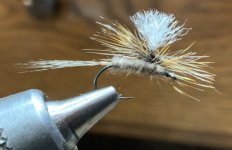
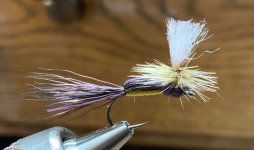
Last edited:

